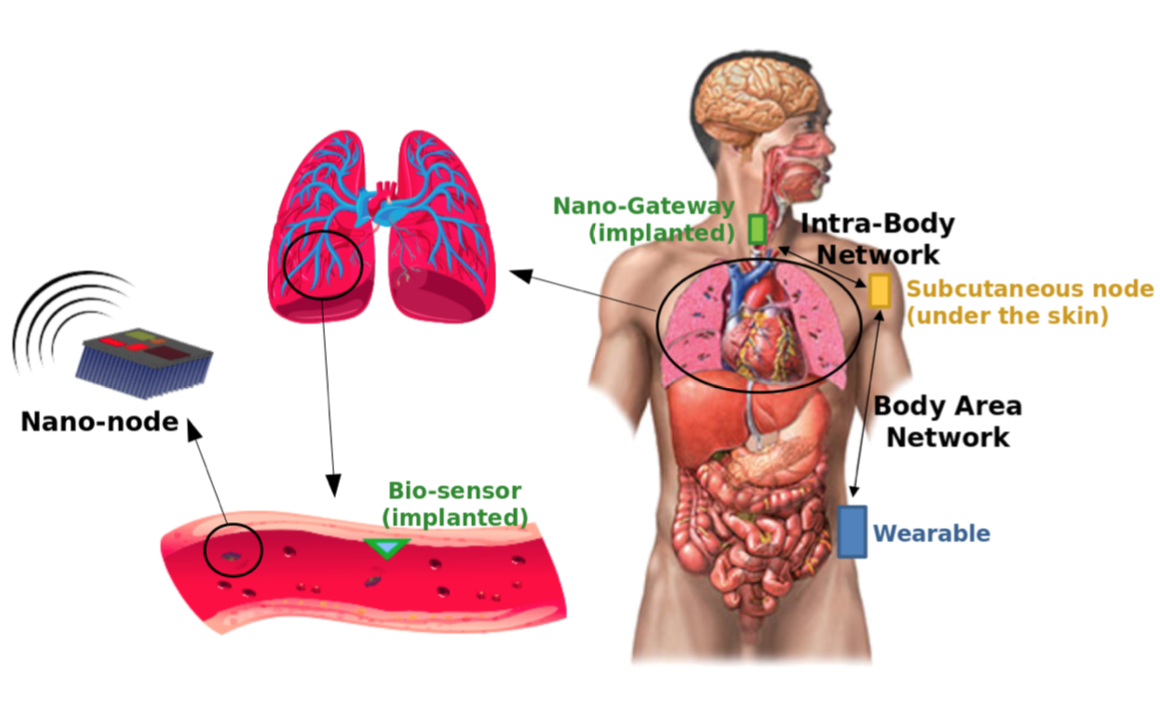Destacado
Bridging Nano- and Body Area Networks: A Full Architecture for Cardiovascular Health Applications
Cardiovascular events occurring in the bloodstream are responsible for about 40% of human deaths in developed countries. Motivated by this fact, we present a new global network architecture for a system for the diagnosis and treatment of cardiovascular events, focusing on problems related to pulmonary artery occlusion, i.e., situations of artery blockage by a blood clot. The proposed system is based on bio-sensors for detection of artery blockage and bio-actuators for releasing appropriate medicines, both types of devices being implanted in pulmonary arteries. The system can be used by a person leading an active life and provides bidirectional communication with medical personnel via nano-nodes circulating in the bloodstream constituting an in-body area network. We derive an analytical model for calculating the required number of nano-nodes to detect artery blockage and the probability of activating a bio-actuator. We also analyze the performance of the body area component of the system in terms of path loss and of wireless links budget. Results show that the system can diagnose a blocked artery in about 3 hours and that after another 3 hours medicines can be released in the exact spot of the artery occlusion, while with current medical practices the average time for diagnosis varies between 5 to 9 days.

Autores
Asorey-Cacheda, R., Correia, L.M., Garcia-Pardo, C., Wojcik, K., Turbic, K., Kulakowski, P.
Revista
IEEE Internet of Things Journal
Publicado
20 de octubrede 2022

